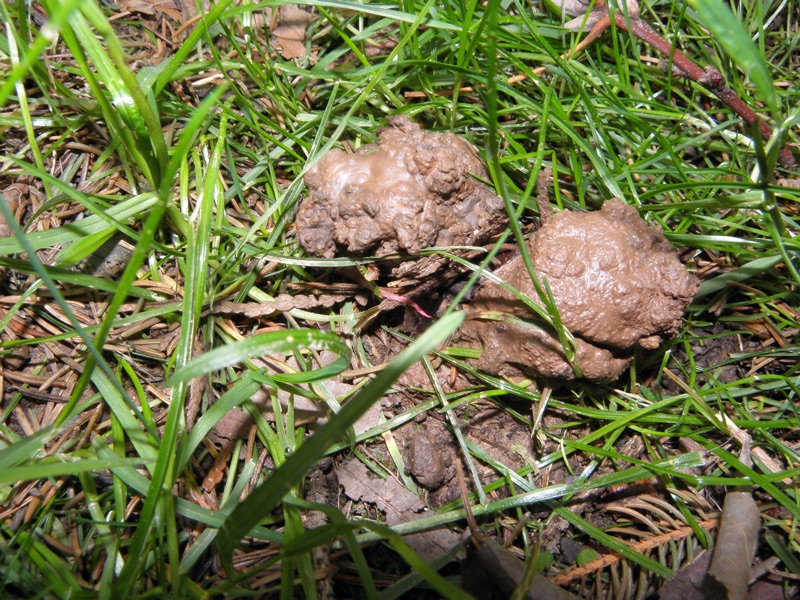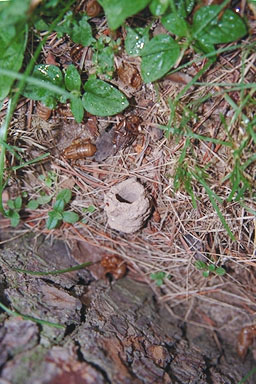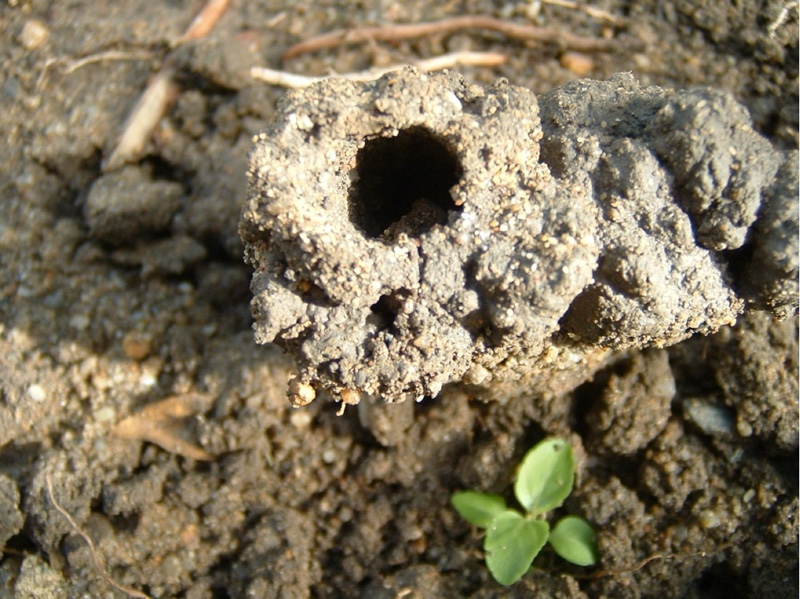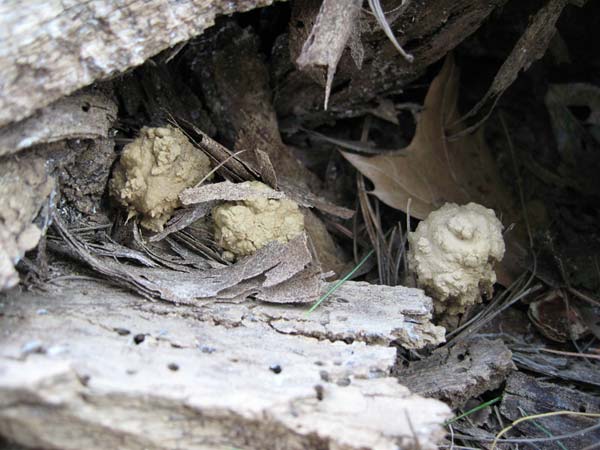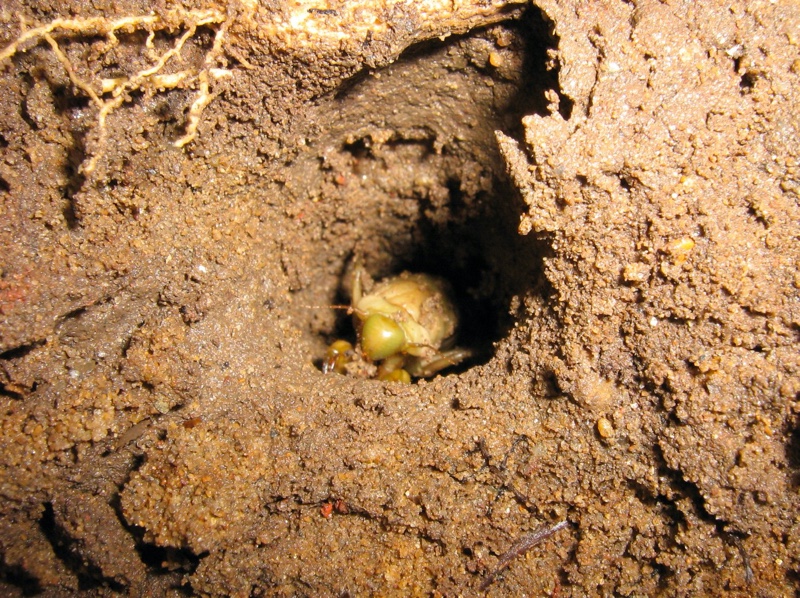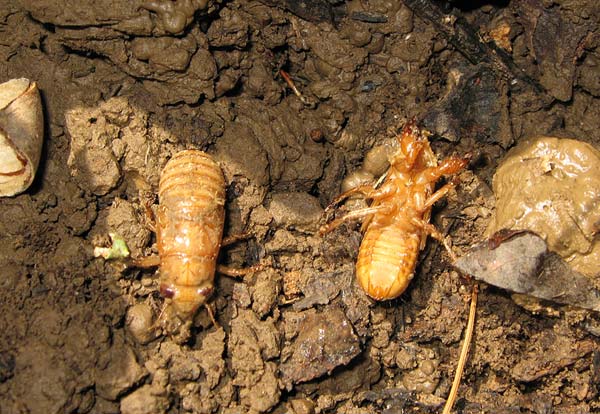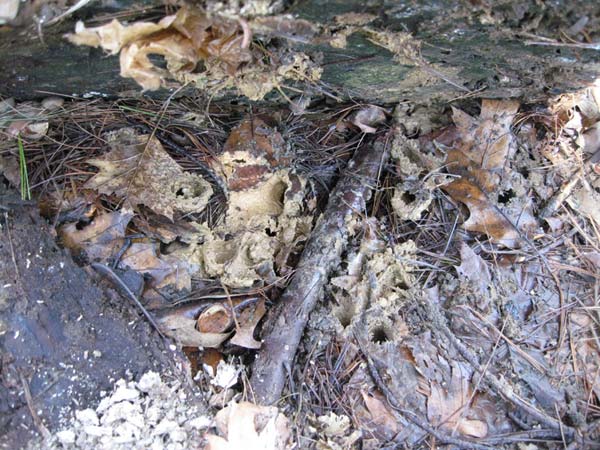You might notice that some cicadas have shriveled-up or otherwise damaged wings. Most of the time, wings become damaged during the molting process (ecdysis), specifically while their wings harden (sclerotize). Their wings and body are most vulnerable when they are still soft.
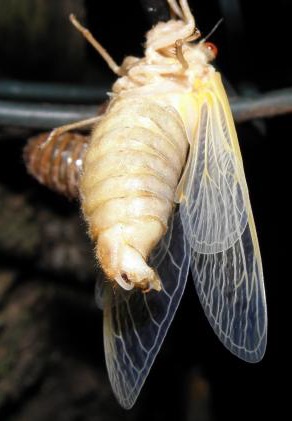
Some reasons why a cicadas’s wings might not get the chance to inflate and harden:
- If a cicada molts and its wings are not able to hang downward they won’t inflate with fluids and form properly.
- Cicadas often trample each other in the rush to find a place on a tree to molt.
- Harsh weather, like wind and rain, knock them to the ground or bend their wings when they’re soft.
- Pesticides
- Malnutrition.
- Physical weakness or defects.
- Fungi infection.
- Predator attacks.
Reasons 1 and 2 are due to humans reducing cicada habitat (forests & fields) and replacing the habitat with buildings, streets, sidewalks, etc. Yes — you are the problem :). But — you are also the solution. The best paper on this is “Faulty Eclosion in Crowded Suburban Periodical Cicadas: Populations Out of Control” by JoAnn White; Monte Lloyd; Jerrold H. Zar (https://www.jstor.org/stable/1937659?seq=1).
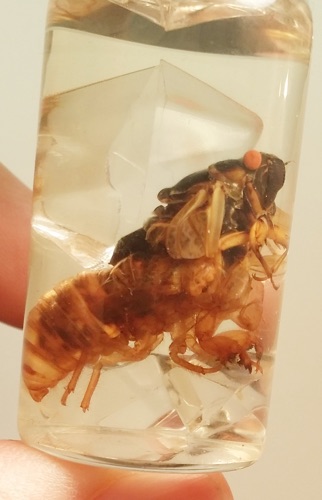
Just 10 Magicicada (American periodical cicadas) generations ago, the U.S. was mostly forest. Back then it was easy to find a vertical surface to molt on, or a plant stem to hang from. Today most forests have been replaced with agriculture, buildings, lawns, roads, sidewalks, parking lots, etcetera — so it has become increasingly difficult for periodical cicadas to find a good place to hang.
Magicicada can afford to lose a large number of their population due to wing malformations and other critical defects because there are simply so many of them — this loss falls in line with their predator satiation strategy.
However, if Magicicada cicadas lose too much habitat, they will go extinct (brood XI went extinct about 60 years ago). Lawns, roads, sidewalks, and other features of our human habitat create surfaces that are insalubrious for cicada molting.
Here’s a good photo by Jim Occi:
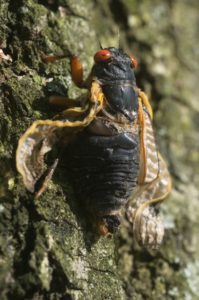
In the video below, you will see a cicada molting. Note that its wings are able to hang downward and inflate to form properly shaped wings. If the cicada tried to molt on a horizontal surface, the odds are its wings would be crumpled.
In the image below, there is a Neotibicen tibicen (not a periodical cicada) that sclerotized (hardened) before completely shedding its nymphal skin.
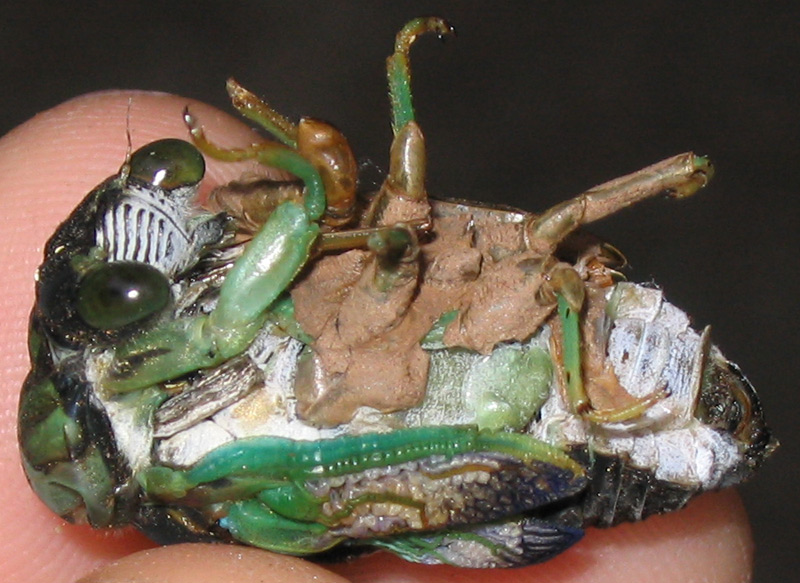
Although adorable, this Neotibicen will never sing or fly.
 Are cicadas attracted to the sound of lawnmowers and other machinery? Yes! Cicadas, particularly Magicicada periodical cicadas, are attracted to lawnmowers, weed-whackers, leaf blowers, hedge trimmers, power drills, etc. If it is loud and vibrates, cicadas will be attracted to it. Why? Most likely because they think your tool is a particularly impressive periodical cicada chorusing center, so males want to join in with the chorus and females want to mate with the particularly impressive males.
Are cicadas attracted to the sound of lawnmowers and other machinery? Yes! Cicadas, particularly Magicicada periodical cicadas, are attracted to lawnmowers, weed-whackers, leaf blowers, hedge trimmers, power drills, etc. If it is loud and vibrates, cicadas will be attracted to it. Why? Most likely because they think your tool is a particularly impressive periodical cicada chorusing center, so males want to join in with the chorus and females want to mate with the particularly impressive males.
